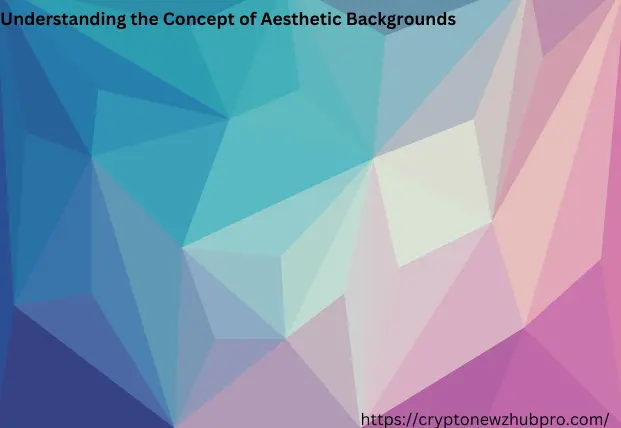When it comes to design, the background plays a crucial role in setting the tone, mood, and aesthetic of the entire composition. Whether you’re working on a website, a digital artwork, or any form of graphic design, understanding how to create an aesthetically pleasing background is key. This article dives deep into the concept of “aesthetic:4cp7q9ppsk4= background,” offering insights and tips on how to achieve the perfect visual appeal.
You May Like: Garden Office Pods: Your Gateway to Work-Life Harmony
Understanding the Concept of Aesthetic Backgrounds

The term “aesthetic:4cp7q9ppsk4= background” may sound complex, but it essentially refers to a background that is visually pleasing and aligns with a specific aesthetic style. Aesthetic backgrounds are more than just simple backdrops; they are carefully crafted to enhance the overall visual experience of the viewer. These backgrounds often incorporate elements such as color harmony, texture, patterns, and sometimes minimalism to create a cohesive look.
Incorporating an “aesthetic:4cp7q9ppsk4= background” into your design means paying attention to every detail, ensuring that the background complements the foreground elements without overpowering them.
Key Elements of an Aesthetic:4cp7q9ppsk4= Background
Creating a visually appealing background involves understanding and applying several design principles. Here are the key elements to consider:
- Color Harmony
- Colors have a significant impact on the perception of a design. When creating an aesthetic background, it’s essential to choose colors that complement each other. Whether you opt for a monochromatic scheme or a contrasting palette, ensure the colors align with the overall theme of your project.
- Texture and Patterns
- Adding texture or patterns can give depth and interest to your background. Subtle textures can enhance the tactile feel of a design, making it more engaging. Patterns, when used correctly, can create a sense of rhythm and movement, adding to the overall aesthetic appeal.
- Minimalism
- Sometimes, less is more. A minimalist approach to background design focuses on simplicity and functionality. By reducing clutter and using negative space effectively, a minimalist background can create a clean and modern aesthetic.
- Symmetry and Balance
- Symmetry and balance are fundamental to creating an aesthetic background. A well-balanced design ensures that no single element overwhelms the others, leading to a harmonious composition that is pleasing to the eye.
Tips for Creating an Aesthetic:4cp7q9ppsk4= Background
To create a background that truly enhances your design, follow these practical tips:
- Start with a Clear Vision
- Before you begin, have a clear idea of the aesthetic you want to achieve. Whether it’s a vintage look, a modern minimalist style, or something more eclectic, knowing your direction will guide your design choices.
- Use High-Quality Images
- If your background includes images, make sure they are high-resolution. Blurry or pixelated images can detract from the overall aesthetic and make your design look unprofessional.
- Incorporate Subtle Gradients
- Gradients can add depth and dimension to your background. Instead of a flat color, try using a gradient that shifts subtly from one shade to another. This technique can create a more dynamic and visually appealing background.
- Experiment with Layering
- Layering different elements, such as textures, shapes, and images, can create a rich and complex background. Experiment with blending modes and opacity to achieve a cohesive look.
- Consider the Content
- Always design your background with the content in mind. The background should enhance the readability and focus of the foreground elements, not compete with them. For instance, if your content is text-heavy, opt for a simpler background that won’t distract from the message.
Examples of Aesthetic:4cp7q9ppsk4= Backgrounds
Let’s explore some popular styles of aesthetic backgrounds that can inspire your next project:
- Vintage and Retro Aesthetic
- Incorporating muted colors, grainy textures, and old-school patterns can create a nostalgic feel that’s perfect for vintage-themed designs.
- Nature-Inspired Backgrounds
- Using elements from nature, such as leaves, flowers, or landscapes, can bring a sense of tranquility and organic beauty to your design. This style often uses earthy tones and soft textures.
- Abstract and Geometric Patterns
- Abstract designs and geometric patterns are great for creating modern and artistic backgrounds. These can range from simple lines and shapes to more complex and colorful compositions.
- Minimalist and Clean Backgrounds
- A white or pastel-colored background with minimal elements can create a sleek and contemporary aesthetic. This style is popular in modern web design and product presentations.
- Dark and Moody Aesthetic
- Dark backgrounds with deep colors and subtle lighting effects can create a dramatic and moody atmosphere. This style is often used in photography websites and portfolios.
How to Optimize Aesthetic:4cp7q9ppsk4= Background for SEO
Incorporating SEO strategies into your design process can significantly impact the visibility of your content online. Here’s how you can optimize your aesthetic backgrounds:
- Use Alt Text for Images
- If your background includes images, make sure to use descriptive alt text. This not only helps with accessibility but also improves your SEO by allowing search engines to understand the content of the images.
- Optimize Image File Size
- Large image files can slow down your website, negatively impacting user experience and SEO. Compress images to reduce file size without compromising quality.
- Incorporate Relevant Keywords
- Use relevant keywords in the file names and alt text of your background images. This can help improve your search engine rankings.
- Ensure Mobile Responsiveness
- Your background should look good on all devices, including mobile. A responsive design ensures that your background scales correctly, maintaining its aesthetic appeal across different screen sizes.
Evolution of aesthetic:4cp7q9ppsk4= background
The evolution of the aesthetic:4cp7q9ppsk4= background reflects the changing trends in design and digital art. Initially, backgrounds were simple and functional, serving as mere backdrops. However, as design aesthetics evolved, backgrounds became more integral to the overall visual experience, incorporating complex patterns, textures, and color harmonies.
In the early 2000s, the rise of web design brought about a shift towards minimalist backgrounds, emphasizing clean lines and negative space. As digital tools advanced, designers began experimenting with gradients, abstract patterns, and layered elements, making backgrounds a focal point rather than a secondary feature.
The modern era of aesthetic backgrounds is characterized by a blend of various styles, from vintage-inspired themes to futuristic designs. The accessibility of design software has democratized the creation of aesthetic backgrounds, allowing more people to contribute to the trend. Today, the aesthetic:4cp7q9ppsk4= background continues to evolve, driven by the desire to create visually stunning and engaging digital environments.
Frequently Asked Question
- What is an aesthetic:4cp7q9ppsk4= background?
- It refers to a visually pleasing background design that aligns with a specific aesthetic style, often used in digital art, web design, and graphics to enhance the overall visual appeal.
- How can I create an aesthetic:4cp7q9ppsk4= background?
- Start with a clear vision of the aesthetic style you want, choose complementary colors, incorporate textures or patterns, and ensure balance and harmony in your design.
- Why is color harmony important in an aesthetic:4cp7q9ppsk4= background?
- Color harmony ensures that the colors in your background work well together, creating a cohesive and pleasing visual experience without clashing.
- What types of textures work well in aesthetic backgrounds?
- Subtle textures like gradients, grain, or soft patterns add depth and interest without overwhelming the design, making the background more engaging.
- Can a minimalist approach be used for an aesthetic:4cp7q9ppsk4= background?
- Yes, minimalism is popular in aesthetic backgrounds, focusing on simplicity, clean lines, and ample negative space to create a modern, uncluttered look.
- How do I ensure my aesthetic background is SEO-friendly?
- Use descriptive alt text for images, optimize file sizes for faster loading times, and include relevant keywords in the image file names and alt text.
- What are some popular aesthetic styles for backgrounds?
- Popular styles include vintage, nature-inspired, abstract geometric, minimalist, and dark moody aesthetics, each offering a unique visual appeal.
- How can I make my aesthetic background mobile-responsive?
- Design with flexibility in mind, ensuring that the background scales correctly across different screen sizes without losing its visual impact.
- What tools can I use to create an aesthetic:4cp7q9ppsk4= background?
- Tools like Adobe Photoshop, Canva, and Figma are popular for creating custom aesthetic backgrounds with a variety of design elements and templates.
- How do aesthetic backgrounds impact user engagement?
- A well-designed aesthetic background can significantly enhance user experience, making your content more appealing and encouraging longer engagement with your website or project.
Conclusion: Mastering the Art of Aesthetic:4cp7q9ppsk4= Background
Creating an “aesthetic:4cp7q9ppsk4= background” is an art that requires attention to detail, a clear vision, and a solid understanding of design principles. By incorporating color harmony, texture, and minimalism, you can craft a background that enhances the overall visual experience of your project. Remember to optimize your design for SEO by using relevant keywords and ensuring mobile responsiveness. With these tips, you’ll be well on your way to creating stunning and effective backgrounds that captivate your audience.
By following these guidelines, you can create an aesthetic:4cp7q9ppsk4= background that not only looks great but also helps improve your content’s visibility and ranking on search engines.
People Also Like: Nurturing Outdoor Sanctuaries with Grounds Maintenance
